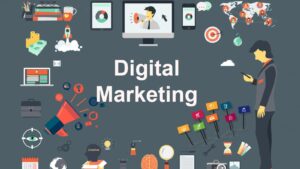
Revitalizing the Essence: Unlocking the Power and Purpose of Traditional Marketing Strategies
Traditional marketing has been around for centuries, but with the rise of digital marketing, it’s easy to overlook its importance. However, understanding traditional marketing is crucial to developing a well-rounded marketing strategy.
If you’re new to marketing or just want to brush up on the basics, you might be wondering, what exactly is traditional marketing? Traditional marketing encompasses all forms of marketing that existed before the internet and digital technologies.
In this blog, we’ll delve into what traditional marketing is, its various forms, and how it differs from digital marketing. By the end, you’ll have a solid understanding of the foundation of marketing and how it has evolved over time.
In today’s digital age, traditional marketing strategies often take a backseat to their digital counterparts. However, it is essential to recognize the timeless relevance and effectiveness of conventional marketing in reaching and engaging target audiences.
This blog aims to explore the power and purpose of what is traditional marketing, and its strategies, highlighting their fundamental principles, exploring various conventional marketing channels, discussing strategies for effective implementation, measuring success and ROI, and integrating traditional and digital approaches for integrated success.
The Fundamentals of Traditional Marketing
Traditional marketing encompasses various offline marketing techniques that have evolved over time. It involves reaching audiences through non-digital channels such as print, broadcast media, and outdoor advertising. While digital marketing and social media marketing has gained prominence, this marketing continues to be relevant and, in many cases, works in synergy with digital efforts.
Conventional marketing plays a vital role in building brand awareness and credibility, establishing a strong foundation for a brand’s overall marketing strategy.
Traditional marketing is unique and focuses on the four Ps:
- Product
- Price
- Place
- Promotion
It aims to create a compelling value proposition, communicate it effectively, and deliver it through appropriate channels. The conventional marketing mix considers the target market, product features, pricing strategies, distribution channels, and promotional activities to reach and influence the intended audience.
Exploring Traditional Marketing Channels
- Print Advertising: Newspapers, magazines, and direct mail remain powerful channels for traditional marketing. Print media provides tangible and credible platforms for reaching specific audiences, and direct mail allows for personalised communication with potential customers. Print advertising allows businesses to showcase their products or services with engaging visuals and persuasive messaging.
- Broadcast Media: Radio and television offer greater reach and engagement opportunities. These channels allow businesses to leverage the power of audio and visual storytelling to captivate audiences and create memorable brand experiences. Radio advertisements can target specific demographics and geographical areas, while television advertisements have the advantage of combining sight, sound, and motion to engage viewers.
- Outdoor Advertising: Billboards, signage, and other forms of outdoor advertising provide a way to connect with audiences in their physical environment. They offer high visibility and can be strategically placed to target specific demographics and locations. Outdoor advertising captures attention during daily commutes or outdoor activities, making it effective for brand awareness campaigns.
Strategies for Effective Traditional Marketing
- Targeting the Right Audience: Market segmentation and customer profiling is crucial for successful conventional marketing. By understanding the demographics, behaviours, and preferences of target customers, businesses can tailor their marketing messages and choose the most appropriate channels for reaching their intended audience. Effective audience targeting ensures that marketing efforts are focused on those most likely to be interested in the product or service.
- Crafting Powerful Messaging: Memorable and persuasive brand communications are key to this marketing success. Captivating storytelling, compelling visuals, and consistent branding help create a lasting impression in the minds of consumers. The messaging should highlight the unique value proposition of the product or service, evoke emotions, and differentiate the brand from competitors.
- Building Strategic Partnerships: Collaborations and sponsorships with relevant organisations or events can enhance brand exposure. By aligning with entities that share similar values or target similar audiences, businesses can extend their reach and credibility. Strategic partnerships provide opportunities for joint marketing initiatives, co-branded promotions, and cross-promotion, leading to increased brand visibility and customer engagement.
Measuring Success and ROI in Traditional Marketing
- Tracking Campaign Performance: Key metrics and analytics are essential for evaluating the effectiveness of these marketing campaigns. Metrics such as reach, frequency, and response rates provide insights into the campaign’s impact and allow for optimization based on data-driven decisions. Businesses can track the number of impressions, website traffic, leads generated, and sales attributed to specific traditional marketing efforts.
- Surveys and Market Research: Gathering customer insights and feedback through surveys and market research helps understand customer preferences and refine marketing strategies. These insights can guide future campaign planning and message development. Surveys can also gauge brand awareness, brand perception, and customer satisfaction, providing valuable information for measuring the success of these marketing initiatives.
- The Role of Traditional Marketing in Driving Conversions and Sales: While conventional marketing may not have the same level of direct tracking and attribution as digital marketing, it plays a significant role in influencing consumer behaviour, driving conversions, and ultimately contributing to sales. Traditional marketing activities, such as print ads, broadcast media, and outdoor advertising, create brand recognition and generate interest, which can lead to customer inquiries, visits to physical stores, or online purchases.
Integrating Traditional and Digital Marketing
- The Power of Cross-Channel Marketing: Bridging traditional and digital strategies can create a more holistic and effective marketing approach. By leveraging the strengths of each channel, businesses can amplify their reach, engage with customers at various touchpoints, and create a seamless brand experience. Integrated marketing campaigns that combine traditional and digital elements have the potential to maximize brand exposure and customer engagement.
- Using Traditional Channels to Drive Online Engagement and Website Traffic: Traditional marketing channels can be utilized to direct audiences to online platforms. By incorporating call-to-actions, QR codes, or specific URLs in print ads or outdoor signage, businesses can drive traffic to their websites or social media profiles, enabling further engagement and conversion opportunities. Tracking mechanisms, such as unique URLs or promotional codes, can help measure the effectiveness of driving online engagement through traditional marketing efforts.
- Leveraging Digital Tools for Traditional Marketing: Online tracking, customer relationship management (CRM), and automation tools can enhance the efficiency and effectiveness of traditional marketing efforts. These tools provide valuable data, streamline processes, and enable personalized communications, further optimizing traditional marketing campaigns.
Final Thoughts
In conclusion, traditional marketing strategies hold significant power and relevance even in the digital age. By blending tradition with innovation, businesses can create comprehensive marketing strategies that leverage the unique advantages of both traditional and digital approaches. Recognizing the importance of traditional marketing channels, such as print advertising, broadcast media, and outdoor signage, alongside strategic partnerships, allows businesses to maximize brand visibility and engage with target audiences effectively.
By harnessing the timeless strategies of traditional marketing, businesses can achieve lasting marketing success and establish a strong foundation for their overall marketing efforts in the ever-changing digital landscape.

